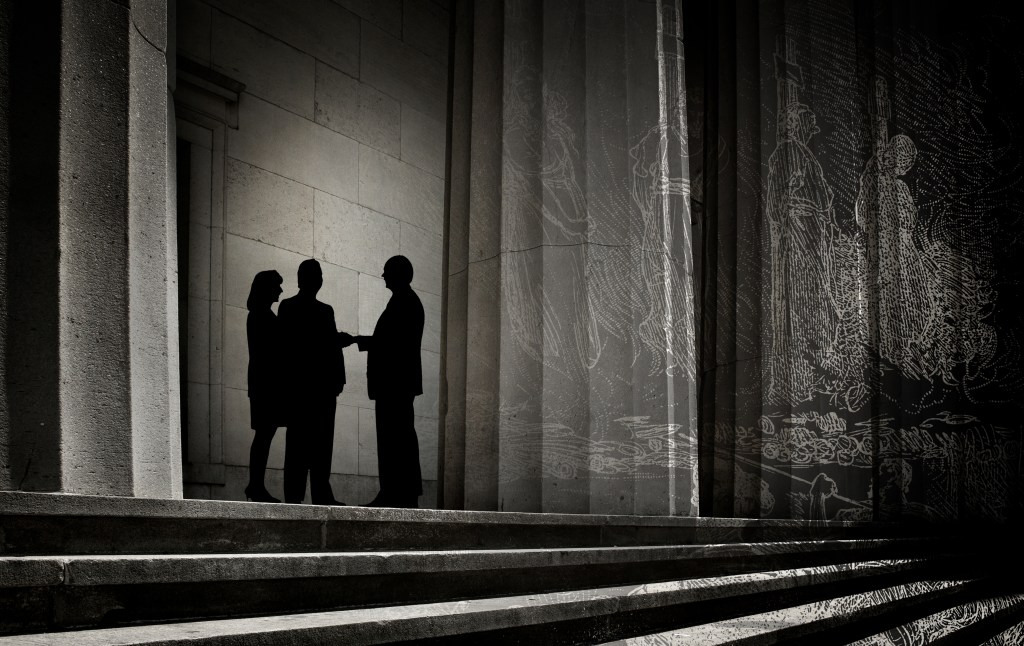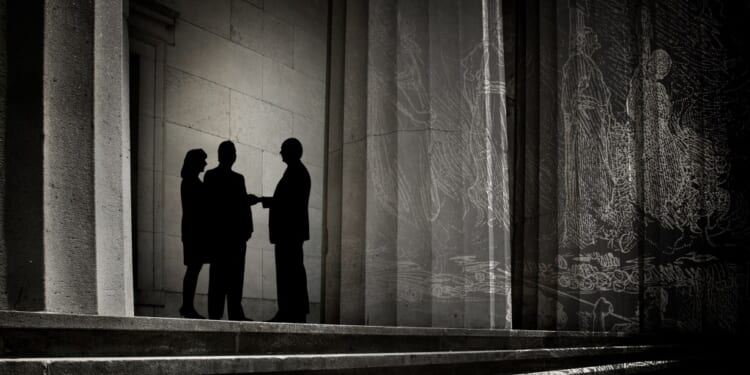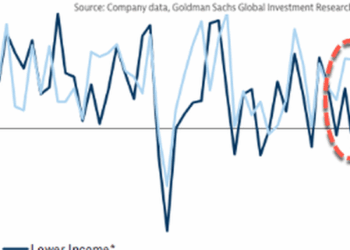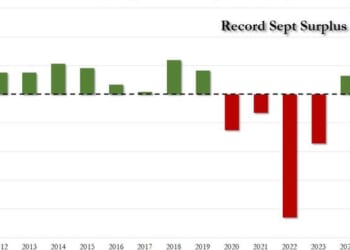
Since Charlie Kirk’s assassination, podcaster and influencer Candace Owens has floated a succession of conspiracy theories implicating everyone in the murder, from the Israeli government to Kirk’s own organization, Turning Point USA. This week, her speculation reached its apogee when she suggested that Donald Trump himself was involved. In a recent broadcast, Owens linked the commemorations of Kirk’s death to a supposed plot, remarking that “when they give you a holiday and a boulevard … they definitely killed you.”
Owens’ wild theorizing isn’t an anomaly; it’s part of something older and darker. There’s a distinctly medieval quality to much of the conspiratorial right—a world animated by unseen cabals, moral corruption, and divine punishment disguised as politics.
Working in the media, one is quick to learn that some stories do much better than others. This isn’t a secret, but it bears repeating: Any story that features a villain—or group of villains—doing something dastardly to innocent victims is much more likely to be read and shared than an article that debunks such narratives with statistics. Our mammalian brains are wired to perceive and anthropomorphize threats: When our ancestors saw thunderbolts crashing down from the sky, they didn’t think it was caused by a complex weather system, but by the wrath of vengeful gods.
Media entrepreneurs and executives—no matter how high-minded—quickly learn that if it bleeds, it leads. Readers want to be frightened by stories of plotters, vandals, criminals, and killers. Even in literature and film, thrillers and true crime command disproportionate attention compared with works of dispassionate analysis. For example, thrillers make up over 12 percent of adult fiction sales in the U.S. and true crime podcasts account for nearly a quarter of top-ranked shows. It’s no surprise that Netflix produces multiple documentaries about the world’s worst serial killers decades after their crimes were committed—without any new evidence coming to light. Our fascination with the lurid never seems to fade.
Yet conspiracy stories—those tales of shadowy cabals wreaking havoc on the world—seem to be the most seductive of all. They combine the adrenaline of a thriller with the morality of a fable. These “moral horror stories” as literary professor Jonathan Gottschall argues in his 2021 book The Story Paradox, succeed not because they persuade people rationally but because they gratify audiences on an emotional level. “Conspiracy stories,” he writes, “promise heroes and villains, secret clues, and moral urgency. And each one invites the listener to join a righteous crusade.”
We crave narratives that make the world legible, particularly in times of instability or flux. In psychological experiments conducted by Adam Galinsky and Jennifer Whitson in 2008, it was found that people who were made to feel powerless began to see patterns that were not there. Participants were asked to recall a moment in their lives when they felt powerless; afterward, they were shown random visual “static” images or sequences of stock data and asked to identify patterns. Those who had been primed to feel powerless were far more likely to report seeing shapes, trends, or connections that didn’t exist. “Participants who lacked control were more likely to perceive a variety of illusory patterns, including seeing images in noise, forming illusory correlations in stock market information, perceiving conspiracies, and developing superstitions,” the authors wrote. Another 2020 study found that a sense of a lack of agency also predicted belief in Jewish conspiracy.
The conspiracist’s worldview transforms chaos into drama and tragedy into design. It restores meaning to a confusing world by insisting that every disaster, every death, every downturn must have a reason. The most enduring conspiracy theories, like those surrounding JFK’s assassination, often follow events that feel too momentous to have been set in motion by something as mundane as one mentally-unwell individual. Senior Quillette editor Jamie Palmer, reflecting on his own years of conspiratorial thinking, noted that the idea of a “communist misfit” killing an American president was an embarrassment to the New Left. Unable to accept that an unremarkable loner could alter the course of history, many turned instead to elaborate alternative explanations. Psychologists call this the proportionality bias: the belief that great events require great causes. A solitary gunman feels arbitrary and small; a hidden cabal restores symmetry, purpose, and a sense of moral order.
Long before our modern variants, conspiracy stories were spread via word of mouth. In the Middle Ages, Jews were targets in particular because they lived among Christians but apart from them. They were marked by different rituals, laws, and occupations, and were viewed as the people who had known Christ—but had rejected him. When a boy was kidnapped and murdered in 12th-century England, the accusation that Jews used the blood of children in their Passover rituals began to spread across Christendom—the original “blood libel.” During the Black Death, Jews were again blamed for deliberately spreading the plague through the poisoning of wells—leading to pogroms across Germany, France, and Switzerland. During the Reformation, Martin Luther produced texts of virulent antisemitism, urging Christians to “eject them forever” from their lands and “raze and destroy” their houses.
These stories of villainy served a function. They united Christians against a common enemy, blamed catastrophes (such as pandemics) on humans rather than complex systems, and legitimized violence as well as the confiscation of Jewish property.
The specifics change—demons become globalists, witches become elites, and covens become cabals—but the psychology remains the same. Conspiracy theories offer what religion once did: moral structure, belonging, and the assurance that evil is real, identifiable, and conquerable. The platforms have changed, but the pattern has not.
It’s easy to look back on such periods with our mouths agape, wondering how irrational medieval peasants could be. But our own era suggests we haven’t advanced as far as we like to think. Tucker Carlson—whose show is, by one measure, the top “news” podcast in America—recently hosted a guest who claimed that COVID-19 was engineered so that Ashkenazi Jews would be immune. Nick Fuentes—who praises Hitler, engages in Holocaust revisionism, and who has called for a “Holy War” against Jews—was briefly the most trending podcaster on Spotify earlier this month. And Candace Owens, in spreading conspiracy theories about the assassination of Charlie Kirk, recently described Jewish journalist Josh Hammer as “subhuman filth.” After Owens implied that Hammer, Turning Point USA, and even the Israeli government were somehow involved in the Kirk killing, Florida’s attorney general announced that a man had been arrested for making multiple death threats against Jewish conservative media figures. One of those figures, TPUSA podcast host Alex Clark, wrote that she had suddenly begun receiving death threats and messages from thousands of people accusing her of covering up the murder.
While our phones and internet connections may be new, the use of stories to scapegoat and spread hysteria long predates literacy itself. When Athens turned against Socrates, it wasn’t reasoned debate but moral panic that condemned him—a belief that he belonged to a secret circle corrupting the city’s youth. In Rome, Nero blamed Christians for the Great Fire, turning rumor into persecution. The same storytelling pattern reappeared in the witch hunts and heresy trials of medieval Europe, where communities convinced themselves that coteries of maleficents were bringing ruin to the world.
As The Dispatch’s own Jonah Goldberg has observed, every communications revolution produces its own populist wave. It was Joseph Goebbels himself who said that the Nazis would not have come to power if it hadn’t been for the radio. New media technologies democratize communication, but they also democratize paranoia.
Even before the internet and the rise of influencers and podcasters, talk show hosts were major drivers of conspiratorial storytelling. In the late 1980s, America was gripped by the “Satanic Panic,” a moral hysteria that produced thousands of allegations of ritual abuse in day care centers, none of which were ever substantiated. In 1988, amid that panic, Geraldo Rivera aired a primetime special titled Devil Worship: Exposing Satan’s Underground, which drew some 20 million viewers. The program recycled many of the same claims later debunked by researchers, including a 1994 New York Times report on a national survey of police and social workers that found over 12,000 accusations of “satanic cult” abuse—but not a single confirmed case. Despite its massive audience, Rivera’s special provoked a backlash: Advertisers pulled roughly half a million dollars in revenue from NBC, and fellow broadcasters distanced themselves from him and his work.
In the past, gatekeepers could at least slow the spread of hysteria. A rumor needed a printing press or a television slot to go viral. Today, outrage is frictionless; everyone is both broadcaster and believer. What’s changed is not our appetite for moral panic, but the speed at which it can be gratified. Still, as the philosopher Dan Williams has observed: “Social media doesn’t manipulate ‘good’ people into accepting ‘bad’ information. It simply reveals popular perspectives on reality that elites previously excluded from mainstream discourse, often for good reason.” In other words, there would not be such a supply of conspiratorialism if it were not for the demand.
The irony is that despite our technological sophistication, the stories we tell have barely evolved. Our medieval ancestors would marvel at the devices in our hands—objects that can summon all the world’s knowledge in seconds—but they would recognize the narratives we share instantly. They too knew tales of hidden cabals, child-sacrificing cults, and cosmic battles between good and evil. We like to think of ourselves as modern, but our storytelling remains primeval. The only difference is that the witch burnings now happen online, and the mob carries smartphones instead of torches.

















